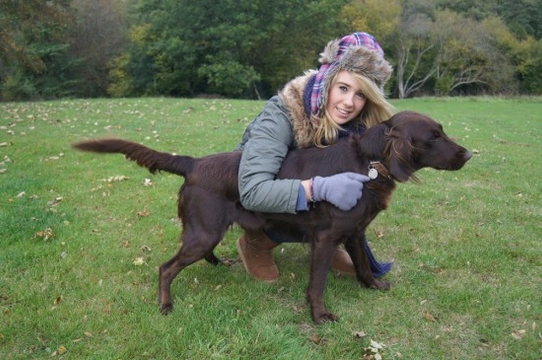
The countryside code for dog owners - Your rights and responsibilities
If you are lucky enough to be able to walk your dog in the countryside occasionally, or if you take your dog on holiday with you to rural areas, then you are probably aware that things work a little bit differently out there in the green spaces than they do in towns and cities! Everyone is familiar with the countryside code (formerly the country code) but do you know exactly what is covered within it, and how to apply it to you and your dog when you are out in the countryside? Can you tell where you are allowed to take your dog and where you must not go? Read on to learn more about the countryside code and how it applies to dogs and dog owners, plus a few hints and tips for your rural walks.
Respect for other people
The countryside code’s first line states “consider the local community and other people enjoying the outdoors.” This means that it is of course important not lo let your dog make a nuisance of himself when you are in villages or open spaces. Ensure that you do not allow him to invade people’s space, jump up or wander into buildings or fields that he is not allowed into. Plus if he is particularly noisy or boisterous, give some thought to the feelings of people who are hoping for a quiet and relaxing day out, and give them their space!
Leave things as you find them
The second section of the countryside code instructs people to “leave gates and property as you find them and follow paths unless wider access is available.” Previously, the advice used to state ‘close gates behind you’ but this has recently been amended to ‘leave gates as you find them.’ If gates are open or closed, the chances are that a farmer or landowner has left them that way for a reason, so please remember how any gates were set up when you passed through them, and close them behind you if you have to open them to let yourself and your dog through. In most rural areas where there is a public right of way across privately owned land, the right of way will consist of a set footpath only and not usually the right to roam across the wider area of the field. Keep your dog on the path, on a lead if needs be, unless you know that the land you are crossing is open access, or that the land owner doesn’t mind dogs being in his field.
Leave nothing behind
“Leave no trace of your visit and take your litter home” of course brings to mind one very important aspect of dog ownership; clearing up after your dog. Make sure that you keen an eye on where he is going to the toilet and that you clear up after him promptly. You may have to go for some distance before you will find a suitable dog waste bin, but don’t be tempted to dump your baggies in hedges or bushes at any cost!
Keep dogs under effective control
This section of the countryside code is really important, for many reasons. Unless you are sure of your dog’s recall, keep them on a lead at all times when walking on footpaths or near fields of livestock. Pay particular attention to your dog’s behaviour, even if they are on the lead, if they are a sight hound, terrier, or other dog with strong hunting instincts. Also, remember that herding breeds such as collies may become highly excitable in the presence of livestock and may think it is their job to start rounding them up. This will not go down well with the local farmers, and can prove dangerous to both the livestock in question and your own dog as well. Remember, it is legal for a farmer to shoot a dog that is worrying his livestock, so ensure that you keep your dog completely under control at all times.Finally, remember to follow any signs and instructions about areas where dogs may not be allowed to go. Just because a patch of land is outdoors does not mean that dogs have an automatic right of entry!
Plan ahead and be prepared
Be sure to take some water with you for your dog, as you cannot be sure where you might get the opportunity to offer him a drink. Ensure that you have a spare lead with you in case you lose one or your regular lead snaps, and ensure that you have enough poop bags with you for the duration of your trip! Maps or plans of the local area can be helpful too, in case you take a wrong turning and find yourself unsure of the way back.
Follow advice and local signs
Keep a close eye out for local signs and information, which can help you to discern where you can walk, any areas that are unsafe or being worked, and give advanced notice of any unusual weather phenomenon or other dangers. Learn about the different ‘footpath’ sign colours, and what signage indicates open access land, closed access and footpaths where you will need to keep your dog close to you.The countryside code for dog owners is all about mutual respect; give a little bit of thought to how your actions and those of your dog impact on others, behave sensibly, and get out there and enjoy your walks in the countryside!



